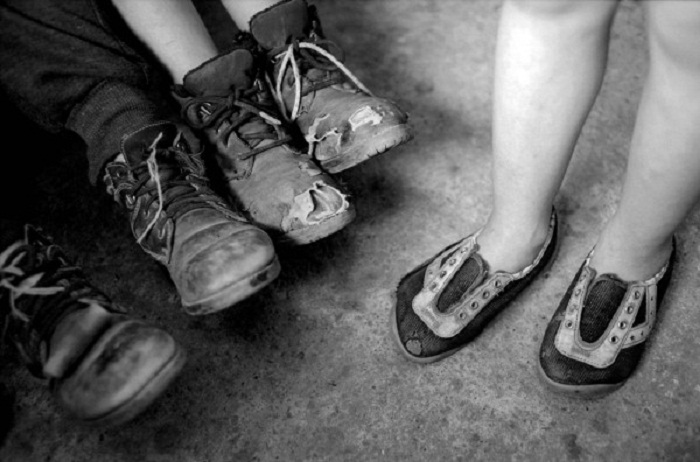But in Armenia just ten minutes from the city center you’ve entered another world. Roads have deteriorated, buildings are in disrepair and some have even collapsed. And although the center of the city is illuminated by hundreds of neon signs and billboards when the sun goes down, the rest of the capital instead descends into darkness. Poverty is widespread.
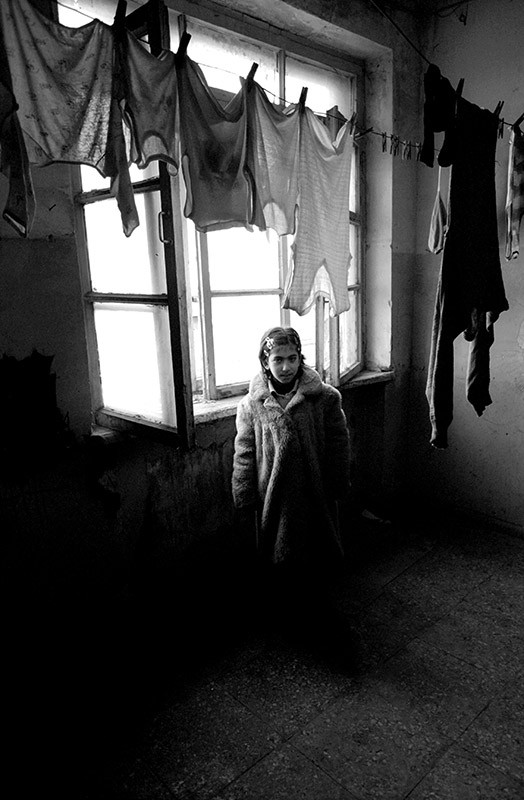
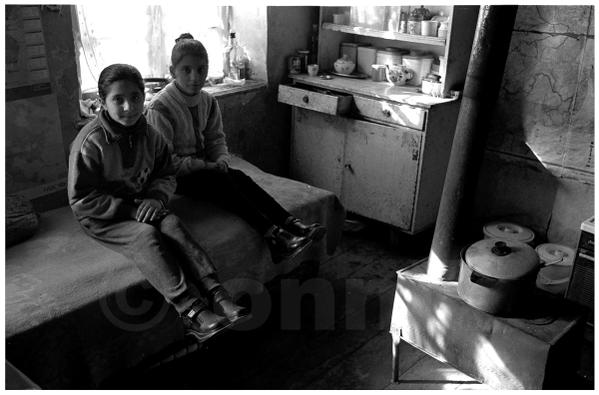
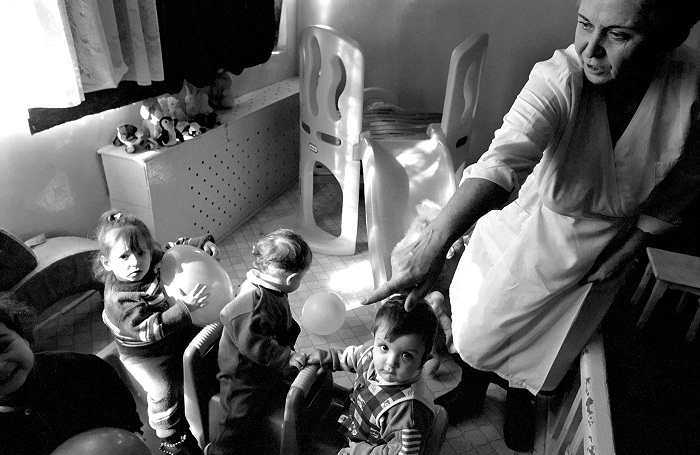
According to official government statistics, nearly half the population lives below the national poverty line with thirteen percent living in extreme poverty. In 2002, salaries averaged just $50 a month while pensions were even lower at $10. According to the National Statistics Service of the Republic of Armenia, seventy percent of the population lives on a staple diet of bread, potatoes and macaroni.
As a result, the United Nations concludes that the issue of survival is still vital for many Armenians.
“When we talk about poverty in Armenia,” says Ashot Yesayan, First Deputy Minister at the Ministry of Social Security, “we are talking about people who cannot even afford to eat. Among potential claimants [for social benefits] are families with young children who have no money for even bread.”
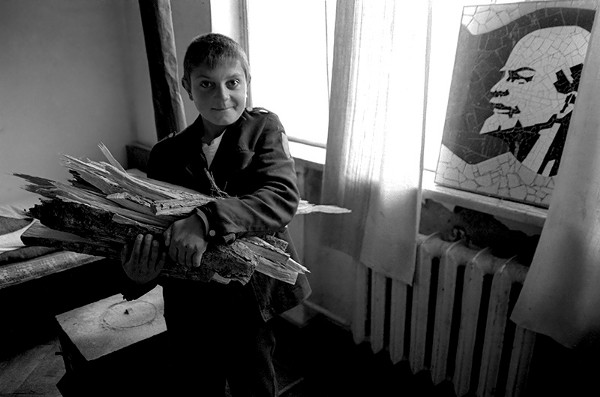
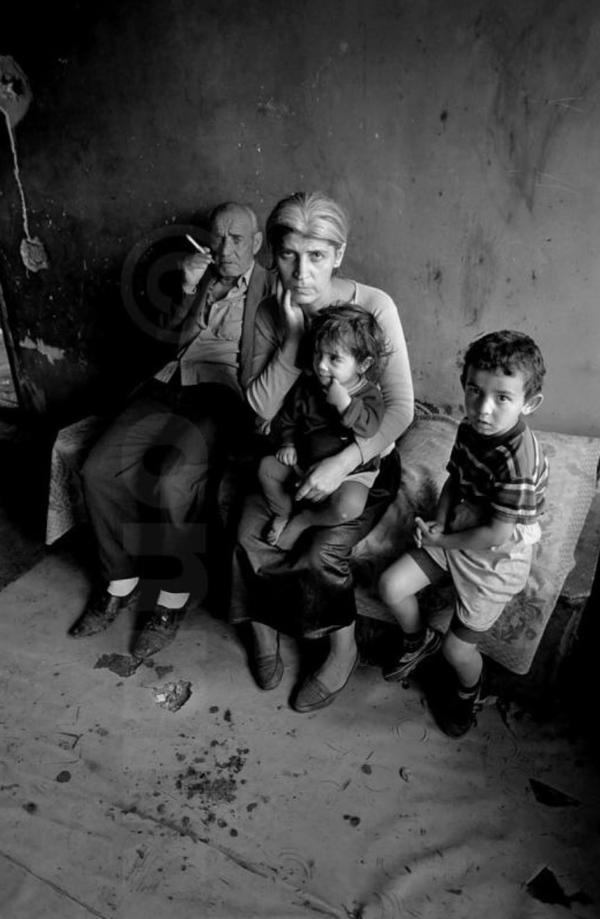
Living on the Edge
In a small room of a derelict house situated in Agarak, half an hour away from Yerevan, one such family burns plastic and rubber to stay warm during the winter months. The walls of the room should be white but, like the three children that resemble paupers from a Dickensian novel, they are black and covered in soot.
A social worker stands calmly as the children’s uncle articulates his anger. The Government’s National Commission for Minors has decided that the children must be removed for their own safety and placed in a Children’s Home. An international organization has been called in to do the dirty work for them.
Without the children, the family will find it impossible to survive. Every day, they beg for scraps and change in the nearby village. Faced with the prospect of his only source of income being taken away, the uncle waves a knife in the air before emotion finally overcomes him. His legs give way and he collapses into a heap on the floor.

Families like this are representative of the poorest of the poor in Armenia. They are unable to feed or clothe themselves; their children rarely attend school and in some cases, are not even officially registered as having been born. With no official documents, they are unable to receive social benefits or medical assistance.
An underclass is forming in Armenia, a world away from the image that the Government would like to portray to its large and influential Diaspora. It is, however, one closer to the reality than that depicted in a hundred coffee-table books and postcards of monasteries and churches photographed against scenic landscapes.
Some even rationalize the situation by arguing that conditions are only bad in the regions of the Republic but there are just as serious concerns with poverty in the cities. In fact, the United Nations considers that urban poverty can be far more desperate than that which faces villagers who can at least live off the land.

In Erebuni, one of the capital’s poorest residential districts, approximately two hundred families inhabit a dilapidated hostel complex that once accommodated workers from the nearby chemical factory. The condition of the building should be enough to raise alarm in most civilized countries but the local council says that it is none of their concern. There are no windows left on the stairwell now exposed to the elements, and the elevators no longer work after residents cannibalized their innards long ago.
A four year old child pushed another on this stairwell last summer and one and half year old Isabella fell through a hole in the railings seven floors to her death. Her mother, Yevgenia, shrugs off her loss although from time to time, tears still swell in her eyes when she remembers, an Armenian website writes.
Yevgenia has four other children to bring up in two tiny rooms furnished only by three rusting, metal bed frames and a divan covered with rags that serve as bedclothes.

They’ve lived in this apartment for over a decade now and don’t even have running water. Her children instead collect water from those more fortunate living below.
“I agree that many families in this building live in very difficult conditions,” admits Samuel Hanryon, MSF’s former Country Director, “but their situation is not the same. For example, we can only work with two of these families because there is a problem with violence. The needs are enormous in Armenia but we are not the Government…”
Which is probably just as well. Across the road, two former officials have erected large and opulent mansions, an arrogant display of wealth to contrast against the extreme poverty opposite.
Children in a Difficult Situation
Two floors up, a father of six removes copper wire from electrical appliances and automobile parts to sell for a few hundred drams.
Hampartsum’s only son is in prison for theft after he stole in order to buy food for the family but unlike those in government who are believed to have stolen significantly more, the courts threw the book at him. Recently, Hampartsum’s son wrote a letter to his father. He can be released from prison if he pays $100. For Hampartsum, however, it might as well be $100,000.
Last September, his daughter, Gohar, became the face on hundreds of posters that were displayed throughout Yerevan highlighting the plight of vulnerable children in Armenia. “I want to live with my family,” read the poster. Now, Gohar and two of her four sisters are temporarily residing in a Children’s Home in Gyumri.
And to make matters worse, Hampartsum’s eldest daughter lives with her grandmother, unwilling to tolerate her father’s drinking. When Hampartsum was supplied with a bag of cement to fix up his apartment he allegedly sold it in order to buy vodka. In and out of hospital for alcoholism, when he drinks, he beats his wife.
But Hampartsum is not a bad man; it’s just that times are hard. His wife found work in a local kiosk but left after three days when the owner refused to pay her the 3,000 drams ($6) she was owed. Meanwhile both Margarita and her husband can’t even scrape 500 drams together to pay for the photographs required for their passport applications.
They need some official papers to receive benefits and other assistance.
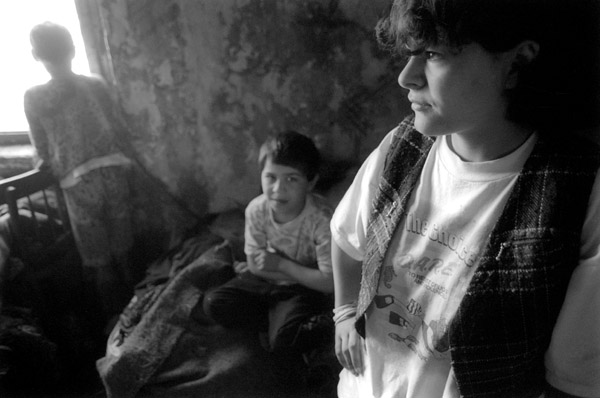
Still, they have it better than others. On the ground floor, an extended family of fourteen inhabits a tiny room that can barely accommodate two. Along the corridor, water gushes from the communal toilet and the washroom, seeping into the floor. Last year, according to the residents and since confirmed by the local authorities, at least two people died of tuberculosis on the ground floor alone.
MSF admit that tuberculosis is fast becoming a cause for concern in Armenia. “The problem is a serious issue, especially with regards to Multi Drug Resistant (MDR) Tuberculosis in Yerevan,” says Hanryon. “Nowadays, anyone suffering from MDR in Armenia is sentenced to death.”
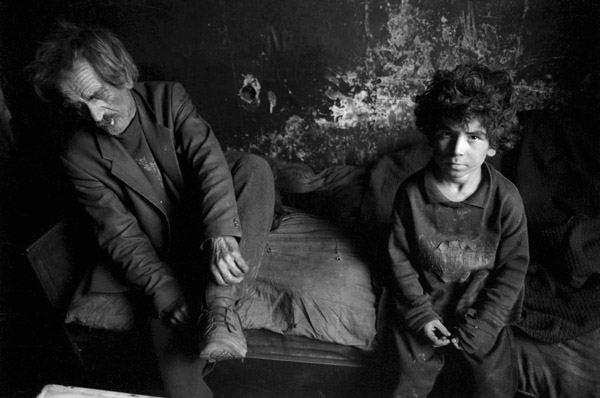
But although journalists, international organizations and film crews visit the families living in this hostel on a regular basis and seemingly with good intentions, everyone complains that nothing changes. Perhaps they have a point...
Photos by Onnik Krikoryan








